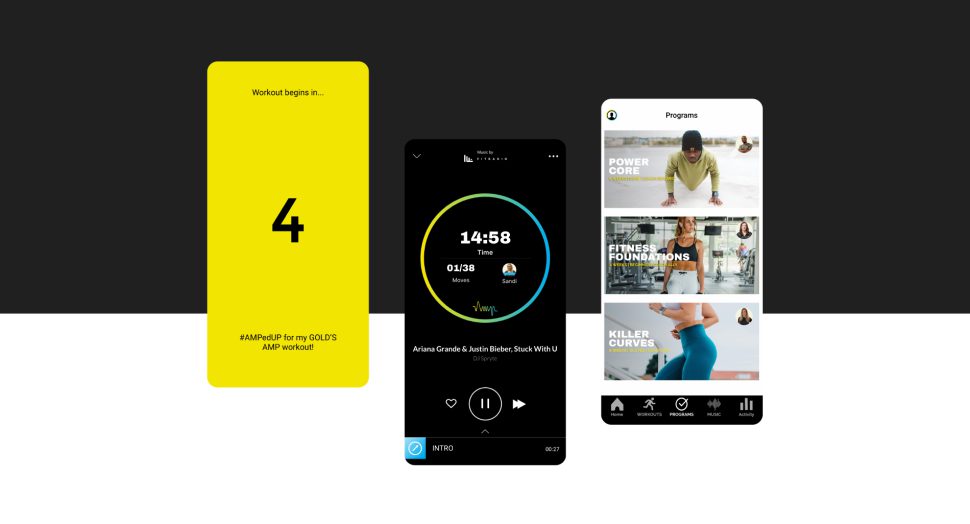
TLDR
Achieving brand distinction in a crowded market is not just about setting yourself apart from competitors; it’s about creating lasting impressions and forging strong connections with your audience. This comprehensive guide will delve into strategies to help your brand shine in a saturated market, ensuring long-term success and recognition.
Brand distinction serves as a lighthouse in the storm, guiding consumers towards the most suitable choice. Understanding the significance of standing out in a crowded market is the first step towards building a successful brand. Brands that fail to differentiate themselves often get lost in the noise, and overshadowed by competitors who have successfully carved out a unique position in the market. By focusing on achieving brand distinction, businesses can increase visibility, attract loyal customers, and ultimately drive growth and profitability.
Understanding the Market
Before embarking on your journey to brand distinction, it’s essential to gain a deep understanding of the market landscape. Analyzing market saturation levels and identifying key competitors will provide valuable insights into the challenges and opportunities that lie ahead. Conducting thorough market research allows brands to identify gaps in the market and capitalize on untapped opportunities. By understanding the needs and preferences of their target audience, brands can tailor their offerings and messaging to better resonate with consumers, gaining a competitive edge in the crowded marketplace.
Defining Your Brand Identity
Crafting a unique value proposition and establishing a distinct brand personality are cornerstones of brand identity. Your brand identity is what sets you apart from competitors and shapes the perceptions of consumers. To define your brand identity, start by conducting a brand audit to assess your current positioning, values, and messaging. Identify what makes your brand unique, and leverage those attributes to create a compelling brand story that resonates with your target audience. Your brand identity should be consistent across all touchpoints, from your logo and visual elements to your tone of voice and customer experience.
Creating Consistent Brand Messaging
Consistency is key when it comes to brand messaging. Developing a cohesive brand voice and ensuring consistency across all touchpoints foster trust and recognition among consumers. Brands that maintain a consistent identity are more likely to be perceived as reliable and trustworthy by consumers. Consistent messaging also helps reinforce brand values and key differentiators, making it easier for consumers to understand what sets your brand apart from competitors. By aligning all communication channels and marketing efforts, brands can create a unified brand experience that resonates with their target audience and drives brand loyalty.
Emphasizing Unique Selling Proposition (USP)
Your unique selling proposition (USP) is what makes your brand stand out in a crowded market. It’s the reason why consumers should choose your brand over competitors and what sets you apart from the competition. To identify your USP, consider what makes your product or service unique and how it addresses the needs or pain points of your target audience. Your USP should be clear, concise, and compelling, highlighting the benefits of choosing your brand. By effectively communicating your USP, you can differentiate your brand in the market and attract customers who resonate with your unique value proposition.
Utilizing Innovative Marketing Strategies
Innovation is vital for capturing the attention of modern consumers. By leveraging emerging platforms and thinking outside the box, you can create impactful marketing campaigns that resonate with your target audience. Innovative marketing strategies allow brands to break through the clutter and connect with consumers in meaningful ways. Whether it’s through interactive content, immersive experiences, or guerrilla marketing tactics, brands that embrace innovation are more likely to stand out in a crowded market. By staying ahead of trends and experimenting with new approaches, brands can maintain relevance and drive engagement with their target audience.
Fostering Brand Loyalty
Building strong customer relationships is essential for fostering brand loyalty. Implementing loyalty programs and personalized experiences can turn one-time buyers into loyal brand advocates. By prioritizing customer satisfaction and going above and beyond to exceed expectations, brands can create positive experiences that keep customers coming back for more. Brand loyalty is not just about repeat purchases; it’s about creating emotional connections that inspire loyalty and advocacy. Brands that invest in building strong relationships with their customers are more likely to thrive in a crowded market, as loyal customers become ambassadors who spread the word and attract new business.
Leveraging Social Proof
Social proof is a powerful tool for building trust and credibility. Showcasing customer testimonials and partnering with influencers can amplify your brand’s reputation and attract new customers. Consumers are more likely to trust recommendations from friends, family, or other trusted sources than traditional advertising. By leveraging social proof, brands can tap into the power of word-of-mouth marketing and harness the influence of others to drive brand awareness and credibility. Whether it’s through user-generated content, influencer partnerships, or customer reviews, social proof can help brands stand out in a crowded market and build trust with their target audience.
You might like
Investing in Quality Customer Service
Exceptional customer service is non-negotiable these days. In a market where consumers have endless options, exceptional customer service can be a key differentiator that sets your brand apart from competitors. By prioritizing customer satisfaction and going above and beyond to exceed expectations, brands can create positive experiences that build loyalty and drive repeat business. Investing in quality customer service not only strengthens relationships with existing customers but also attracts new customers through positive word-of-mouth and referrals.
Staying Agile and Adaptable
Market trends and consumer preferences are constantly evolving. Staying agile and adaptable allows your brand to pivot quickly and stay ahead of the competition. Agility is essential for survival. Brands that can quickly adapt to changing market conditions and consumer trends are more likely to succeed in the long run. By monitoring market dynamics, gathering feedback from customers, and staying informed about industry trends, brands can make informed decisions and adjust their strategies accordingly. Whether it’s launching new products, entering new markets, or evolving marketing tactics, staying agile and adaptable is essential for maintaining relevance and competitiveness in a crowded market.
Measuring and Analyzing Performance
Tracking key performance indicators (KPIs) and leveraging data-driven insights are essential for optimizing your brand strategies. By understanding what resonates with your audience, you can refine your approach and drive better results. Whether it’s website traffic, social media engagement, or sales data, tracking KPIs allows brands to measure the effectiveness of their marketing efforts and make data-driven decisions. By regularly analyzing performance metrics and identifying areas for improvement, brands can optimize their strategies and drive better results. Whether it’s adjusting marketing tactics, refining messaging, or reallocating resources, data-driven insights are essential for driving continuous improvement and maximizing ROI.
Continuous Improvement and Innovation
The journey towards brand distinction is ongoing. By embracing change and continuously innovating, your brand can stay relevant and resilient in a crowded market. In a fast-paced and constantly evolving business environment, brands that rest on their laurels risk falling behind. Continuous improvement and innovation are essential for staying ahead of the competition and driving long-term success. By embracing change, experimenting with new ideas, and challenging the status quo, brands can position themselves as leaders in their industry and continue to thrive in a crowded market. Whether it’s through product innovation, marketing experimentation, or organizational agility, continuous improvement and innovation are essential for maintaining a competitive edge and achieving brand distinction.
Frequently Asked Questions
Identifying your brand’s unique selling proposition (USP) requires a deep understanding of your target audience and competitors. Start by analyzing your product or service and determining what sets it apart from similar offerings in the market. Consider factors such as quality, price, features, and customer benefits. Conduct market research to gather insights into consumer preferences and pain points. Your USP should address a specific need or problem that resonates with your target audience while positioning your brand as the best solution.
Innovative marketing strategies can help your brand capture attention and differentiate itself in a crowded market. Consider leveraging emerging platforms such as social media channels, podcasts, or live streaming to engage with your audience in new and creative ways. Collaborate with influencers or brand ambassadors who align with your brand values to reach a wider audience. Interactive content such as quizzes, polls, or augmented reality experiences can also create memorable brand interactions and set you apart from competitors.
Customer service plays a critical role in building brand loyalty and fostering long-term relationships with customers. Providing exceptional support and addressing customer inquiries or concerns promptly can enhance the overall customer experience and increase satisfaction levels. Positive interactions with customer service representatives can leave a lasting impression and encourage repeat purchases and referrals. Investing in quality customer service demonstrates your commitment to customer satisfaction and strengthens trust in your brand.
Tracking key performance indicators (KPIs) is essential for evaluating the effectiveness of your brand strategies. Some relevant metrics to consider include brand awareness, customer engagement, conversion rates, customer retention, and brand sentiment. Monitoring website traffic, social media engagement, and sales data can provide valuable insights into the impact of your marketing efforts and help identify areas for improvement. Regularly analyzing these metrics allows you to adjust your strategies and optimize performance to achieve your brand objectives.
Adapting your brand strategies to changing market trends requires staying informed and agile in your approach. Monitor industry trends, consumer behavior, and the competitive landscape to identify emerging opportunities and challenges. Conduct market research and gather feedback from customers to understand their evolving needs and preferences. Flexibility and innovation are key to responding quickly to market shifts and staying ahead of the competition. Experiment with new ideas, technologies, and communication channels to keep your brand relevant and engaging in a dynamic market environment.
Brand consistency is essential for creating a cohesive and memorable brand identity that stands out in a crowded market. Consistent messaging, visual branding, and tone of voice across all touchpoints reinforce your brand’s identity and build trust with consumers. By consistently delivering on your brand promise and values, you differentiate yourself from competitors and establish a strong emotional connection with your audience. Consistency also helps to increase brand recognition and recall, making it easier for customers to choose your brand over others in the market.
In conclusion, achieving brand distinction in a crowded market is both a challenge and an opportunity. By implementing the strategies outlined in this guide and staying true to your brand’s identity, you can carve out a unique position in the market and thrive amidst competition. Remember, consistency, innovation, and a customer-centric approach are key to standing out and succeeding.









